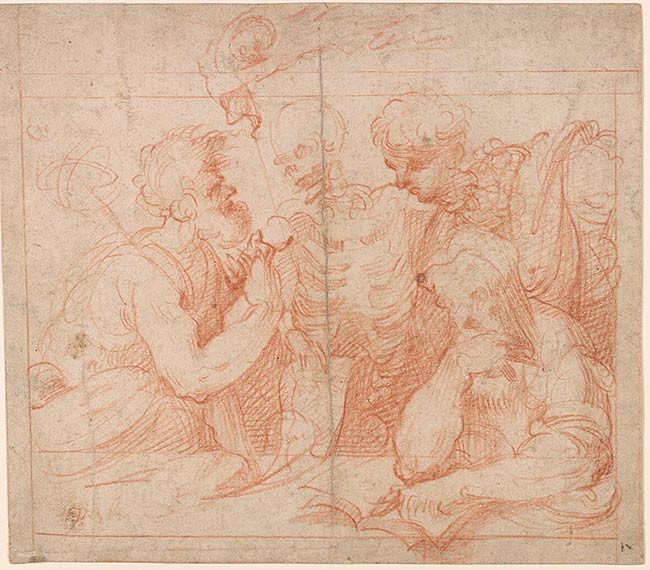

The drawing was acquired as by Parmigianino and was formerly ascribed to Girolamo Mazzola Bedoli – an attribution rejected by A. E. Popham who suggested instead a possible reassignment to Antonio Campi (unpublished letter to Morgan curators, 1963). In 1973, Konrad Oberhuber argued that the present drawing is an early study by Parmigianino for an allegorical composition related to vanity, made before the artist left for Rome.1 The attribution to Parmigianino has not received much support, with the exception of Achim Gnann, who more recently accepted Oberhuber’s proposal, assigning the sheet to Parmigianino and dating it ca. 1522-23.2
Footnotes:
- Washinton and New York 1973-74, 68, no. 56.
- Gnann 2007, 1: 359, no. 60.
Watermark: none.
Formerly attributed to Girolamo Mazzola Bedoli (ca. 1505-ca. 1569/70); Antonio Campi (1523-1587).
Inscribed at lower left, in red chalk, "Palma (?)"; illegible inscription on verso, at lower right, in pen and purple ink.
Mazzola Bedoli, Girolamo, approximately 1500-1569, Formerly attributed to.
Campi, Antonio, 1522 or 1523-1587, Formerly attributed to.
Scholz, János, former owner.
Selected references: Washington and New York, 1973-74, 68, no. 56 (as Parmigianino); Gnann 2007, 1: 359, no. 60 (as Parmigianino).
Oberhuber, Konrad, and Dean Walker. Sixteenth Century Italian Drawings From the Collection of János Scholz. Washington, D.C. : National Gallery of Art ; New York : Pierpont Morgan Library, 1973, no. 56, repr.
Dervaux, Isabelle. Drawing connections: Baselitz, Kelly, Penone, Rockburne, and the old masters. New York: Morgan Library & Museum, 2007, p. 15, 17 (repr.)
